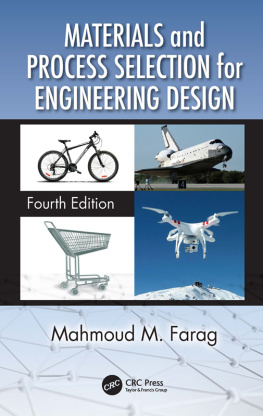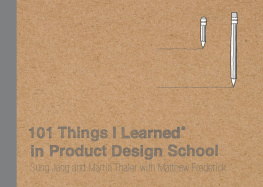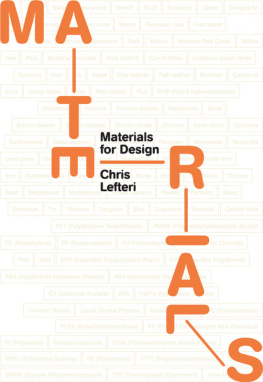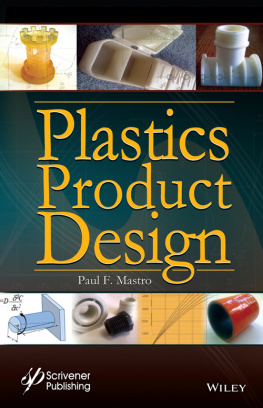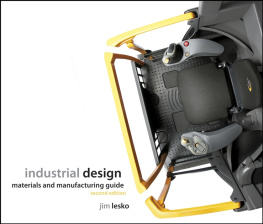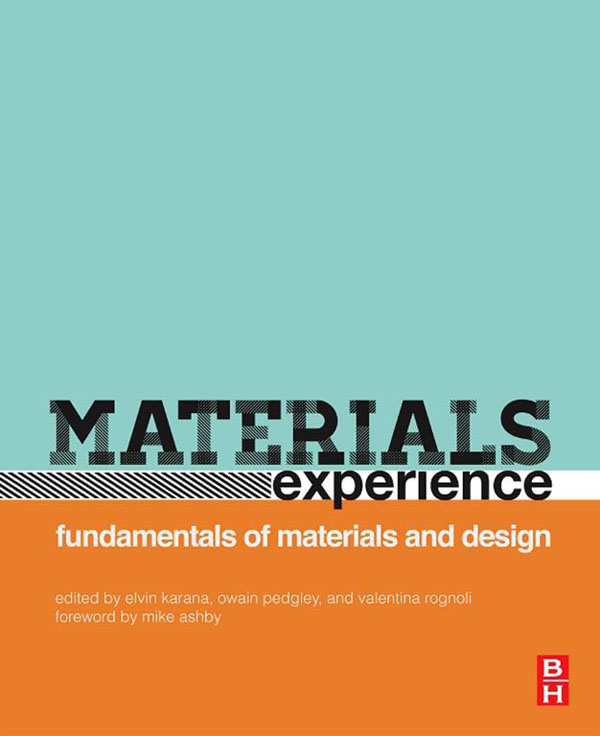Copyright
Butterworth-Heinemann is an imprint of Elsevier
The Boulevard, Langford Lane, Kidlington, Oxford, OX5 1GB, UK
225 Wyman Street, Waltham, MA 02451, USA
First published 2014
Copyright 2014 Elsevier Ltd. All rights reserved.
No part of this publication may be reproduced, stored in a retrieval system or transmitted in any form or by any means electronic, mechanical, photocopying, recording or otherwise without the prior written permission of the publisher
Permissions may be sought directly from Elsevier's Science & Technology Rights Department in Oxford, UK: phone (+44) (0) 1865 843830; fax (+44) (0) 1865 853333; email: , and selecting Obtaining permission to use Elsevier material
Notice
No responsibility is assumed by the publisher for any injury and/or damage to persons or property as a matter of products liability, negligence or otherwise, or from any use or operation of any methods, products, instructions or ideas contained in the material herein. Because of rapid advances in the medical sciences, in particular, independent verification of diagnoses and drug dosages should be made
British Library Cataloguing in Publication Data
A catalogue record for this book is available from the British Library
Library of Congress Cataloging-in-Publication Data
A catalog record for this book is available from the Library of Congress
ISBN: 978-0-08-099359-1
For information on all Butterworth-Heinemann publications visit our website at books.elsevier.com
Printed and bound in the UK
14 15 16 17 18 10 9 8 7 6 5 4 3 2 1

Biography
Elvin Karana is an Assistant Professor in the Faculty of Industrial Design Engineering (IDE) at Delft University of Technology (DUT), The Netherlands. She obtained her Bachelor and Master degrees from the Department of Industrial Design, Middle East Technical University (METU), in Ankara. She undertook her PhD research at DUT, where she developed a Meaning Driven Materials Selection Tool to support designers in their materials selection activities. Some of her major publications can be found in Materials and Design journal, International Journal of Design and Journal of Cleaner Production. Elvin is one of the founders of the Natural Fibre Composites Design Platform in The Netherlands. She is also the developer and Coordinator of the materials library Made Of.. within IDE at DUT, Her current research interests include effective materials education in design, dynamic materials experiences and designing with bio-based materials.

Owain Pedgley is Associate Professor of Industrial Design at Middle East Technical University (METU), Ankara, Turkey. He undertakes research in the areas of materials and manufacturing for industrial design and user-product experiences, with a special emphasis on musician-instrument interaction. Owain is a partner in the musical instrument innovation project Cool Acoustics. He contributes to design education at bachelor, master and doctoral levels and is experienced in establishing and managing industrially collaborated projects with firms including Bosch und Siemens Hausgerte, Vestel and Kale. Prior to his academic career, Owain served three years as a product designer in the sports equipment sector.

Valentina Rognoli is an Assistant Professor in the Department of Chemistry, Materials and Chemical Engineering Giulio Natta at Politecnico di Milano, Italy, where she conducts research in the field of materials and education. She teaches in the School of Design within Politecnico di Milano. After two years at Enzo Mari's studio in Milan, in 2000 Valentina started her academic activities focused on materials and their expressive-sensory dimension. In her PhD research she developed an Expressive-Sensorial Atlas of Material as a tool to improve materials education in the field of design. Valentina also developed and coordinated Materiali e Design, the materials library of Politecnico di Milano. Her current research topics delve into materials and their relationship with innovation, emotions, and sustainability.

Foreword: Materials ExperienceFundamentals of Materials and Design
We live, in the West, in a world with a surfeit of products. You want an electric kettle? You have a choice of at least 30, all with more or less the same technical specification. A vacuum cleaner? There are at least 30 models of those too. A refrigerator? A car? The same story.
Given this surfeit, how do consumers choose the products they buy? The answer has to do with value. A product has a costthe outlay in manufacturing and marketing it. It has a pricethe sum at which it is offered to the consumer. And it has a valuea measure of what the consumer thinks it is worth. Consumers buy products that they perceive as having a value (to them) that most exceeds their price. But what determines value? Sound technical design clearly plays a role: the product must work properly and be safe and economical. Beyond that, the product must be easy to understand and operate, and these are questions of usability. And there is a third requirement: that the product gives satisfaction, that it enhances the life of its owner. The value of a product is a measure of the degree to which it meets or exceeds the expectation of the consumer in all three of thesefunctionality, usability, and satisfaction. One might think of the three as forming the character of the product. It is very like human character. An admirable character is one who functions well, interacts effectively, and is rewarding to be with. An unappealing character is one that does none of these. Unappealing products are kept only as long as they are useful and are then cast aside. By contrast, as Valentina Rognoli and Elvin Karana point out in of this remarkable collection of essays, well-designed products are cherished; they can acquire value with age, andfar from becoming unwantedcan outlive their design-life many times over. The auction houses and antique dealers of New York, London, and Paris thrive on the sale of products that, often, were designed for practical purposes but are now valued more highly for their aesthetics, associations, and perceived qualities. People do not throw away things for which they feel emotional attachment.
The rapid turnover of products we see today is a comparatively recent phenomenon. In earlier times, furniture was bought with the idea that it would fill the needs not just of one generation but of severaltreatment that, today, is reserved for works of art. A wristwatch, or a gold pen, was a thing you used for a lifetime and then passed on to your children. No more. Changing lifestyles and fashions, promoted by seductive advertising, reinforce the desire for the new and urge the replacement of the old. Industrial design carries a heavy responsibility hereit has, at certain periods, been directed toward creative obsolescence, designing products that are desirable only if new, and urging the consumer to buy the latest models, using marketing techniques that imply that acquiring them is, this has led to an ecological crisis, a society that consumes natural resources at an accelerating rate, not conserving them but degrading and discarding them, with environmental consequences that are now a cause of real concern.


